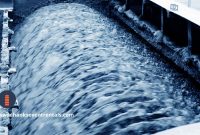The Role of Polishing and Filtration Units in Water Treatment
Polishing and filtration units are integral components in modern water treatment processes. They ensure the removal of fine particles, residual contaminants, and dissolved solids, leading to high-quality water suitable for various applications. Understanding their importance and functionality helps industries, municipalities, and households optimize water usage while ensuring safety and regulatory compliance.
How Polishing and Filtration Units Work
Polishing and filtration are typically the final steps in the water treatment process. These stages focus on refining water quality by removing microscopic particles, trace chemicals, and biological contaminants that may remain after primary and secondary treatment.
What is Polishing in Water Treatment?
Polishing refers to the final purification process that targets very fine contaminants, ensuring water meets strict quality standards. The purpose of polishing is to eliminate impurities like dissolved minerals, organic compounds, and residual chemicals. This is especially important in industries such as pharmaceuticals, food processing, and electronics, where water quality must meet high purity levels.
The Role of Filtration Units
Filtration units play a crucial role in the water treatment process by trapping and removing suspended solids, sediments, and larger particulate matter. These units use different types of filter media to achieve desired outcomes, ranging from sand filters and activated carbon filters to advanced membrane filters like ultrafiltration (UF) and reverse osmosis (RO).
Types of Filtration Methods Used in Polishing
Various filtration methods can be employed to polish water, depending on the desired water quality and specific contaminants. Here are some commonly used filtration techniques:
- Activated Carbon Filtration
Activated carbon filters are effective at removing chlorine, organic compounds, and odors. They absorb contaminants through a process called adsorption, where particles adhere to the surface of the carbon filter. - Ultrafiltration (UF)
UF membranes are designed to remove viruses, bacteria, and high-molecular-weight contaminants. They are commonly used in polishing units because they provide a higher degree of filtration compared to conventional methods. - Reverse Osmosis (RO)
RO systems are highly effective at removing dissolved salts, heavy metals, and other inorganic compounds. The process involves forcing water through a semipermeable membrane, leaving impurities behind. - Ion Exchange
This method is used to remove dissolved ions, such as calcium and magnesium, from the water. It is often applied in water softening and deionization processes, crucial for achieving ultra-pure water. - Sand Filtration
Sand filters remove large particles from the water through mechanical straining. While not as fine as other methods, sand filtration is often used as a pre-treatment step before polishing.
Why Polishing and Filtration Units are Essential in Water Treatment
Polishing and filtration units are necessary for the following reasons:
- Compliance with Regulatory Standards
Many industries must adhere to strict water quality regulations. Polishing and filtration units ensure that the treated water meets the necessary standards, preventing potential health hazards and legal consequences. - Protection of Equipment
High-quality water prevents scaling, corrosion, and fouling of industrial equipment, extending the lifespan and efficiency of machinery. - Enhanced Water Quality for Sensitive Applications
Industries such as healthcare, microelectronics, and food production require water free from even trace contaminants. Polishing units provide the extra level of purification needed for these sensitive applications. - Reduction of Wastewater Treatment Costs
By using effective polishing and filtration methods, facilities can reduce the load on wastewater treatment systems, lowering operational costs and minimizing environmental impact.
Applications of Polishing and Filtration Units in Different Industries
1. Industrial Manufacturing
In manufacturing, water is used for cooling, cleaning, and processing. Polishing and filtration units remove residual oils, metals, and other impurities to ensure consistent quality. This prevents defects in products and reduces maintenance costs for machinery.
2. Food and Beverage Industry
Water quality in food production must be maintained at a high standard to avoid contamination. Polishing ensures that any trace contaminants are eliminated, making the water suitable for direct contact with food products.
3. Pharmaceuticals
Pharmaceutical manufacturing requires water that meets ultra-pure standards for both production and cleaning processes. Polishing removes any potential contaminants, ensuring that the end products are safe and compliant with health regulations.
4. Municipal Water Treatment
Polishing and filtration units are commonly used in municipal water systems to improve the quality of drinking water. This step is crucial in removing residual disinfectants and byproducts, ensuring safe and clean tap water for consumers.
5. Electronics and Semiconductor Manufacturing
In electronics production, even the smallest impurities can cause defects. Polishing and ultra-pure water are vital to prevent contamination during manufacturing processes, especially in semiconductor and microchip fabrication.
Advancements in Polishing and Filtration Technologies
Water treatment technologies continue to evolve, leading to more efficient and cost-effective methods for polishing and filtration. Here are some of the latest advancements:
- Nanofiltration Membranes
These membranes offer high selectivity for removing specific contaminants at a molecular level, allowing for enhanced water purification without excessive energy consumption. - Self-Cleaning Filters
Automatic self-cleaning filters reduce maintenance requirements and downtime by continuously removing accumulated debris from filter surfaces. - Hybrid Filtration Systems
Combining multiple filtration methods, such as ultrafiltration and reverse osmosis, improves overall system efficiency and water quality, making it suitable for complex industrial applications. - Advanced Monitoring Systems
Real-time monitoring of water quality using sensors and data analytics helps optimize the performance of polishing and filtration units. This technology ensures consistent water quality and identifies issues before they become significant problems.
Choosing the Right Polishing and Filtration Units for Your Needs
When selecting a polishing or filtration system, several factors should be considered:
- Water Quality Requirements
Determine the specific contaminants that need to be removed and the desired water quality. Different applications require different levels of purity. - Flow Rate and Capacity
Ensure the system can handle the required volume of water within the needed time frame. Larger facilities may require high-capacity systems. - Operating and Maintenance Costs
Consider the long-term costs associated with the system, including filter replacements, energy consumption, and maintenance. - Compatibility with Existing Systems
The chosen unit should integrate seamlessly with any existing water treatment infrastructure. - Technology and Automation Level
Modern systems with advanced automation and self-cleaning features may be more efficient and easier to manage.
FAQs
Q1: What is the difference between polishing and primary filtration in water treatment?
Primary filtration focuses on removing larger particles and sediment, while polishing targets finer contaminants and ensures the water meets stringent quality standards.
Q2: Can polishing units remove all types of contaminants?
Polishing units are effective at removing most residual contaminants, including dissolved minerals, trace chemicals, and some organic compounds. However, certain contaminants may require specialized treatment methods.
Q3: How often should the filters in a polishing unit be replaced?
The frequency of filter replacement depends on factors like water quality, usage volume, and filter type. Regular monitoring of filter condition is recommended to ensure optimal performance.
Q4: Are polishing and filtration units suitable for residential use?
Yes, they can be used in residential settings, particularly in areas with poor water quality or for households with specific water purity requirements. They help improve the taste, safety, and clarity of drinking water.
Q5: What are some common issues with polishing units, and how can they be prevented?
Common issues include clogging, scaling, and membrane fouling. Regular maintenance, proper pre-treatment, and selecting the appropriate filtration system for specific water conditions can prevent these problems.
Q6: Is it necessary to use both polishing and filtration units in water treatment?
Using both polishing and filtration ensures comprehensive water treatment, providing different levels of contaminant removal. Combining them results in higher water quality suitable for a wide range of applications.
Q7: How does polishing improve the effectiveness of reverse osmosis systems?
Polishing can remove contaminants that might otherwise reduce the efficiency of RO membranes. By pre-treating water with polishing, RO systems can operate more effectively and last longer.
Q8: Can polishing and filtration units reduce water treatment costs?
Yes, by optimizing the water quality before entering other treatment stages, these units can reduce the workload on downstream systems, thus lowering overall operational costs.
The importance of polishing and filtration units in water treatment cannot be understated. As key components in the purification process, they ensure water safety, regulatory compliance, and the protection of equipment. Choosing the right system tailored to specific needs is crucial for achieving the desired water quality while maintaining cost-efficiency and sustainability.
Read more also: Smart Solutions for PFAS Destruction in Water Treatment



